Behind the Artist: Pierre-Auguste Renoir
More than 150 years ago, Pierre-Auguste Renoir persevered financial hardship and ridicule from critics to become one of the most famous artists in history and a central figure in the Impressionist movement.
With their bright imagery of figures in candid compositions, Renoir’s paintings challenged the norm. Instead of traditional subjects like mythology and Biblical imagery, the Impressionist chose to paint sensual and charming portraits of ordinary people and landscapes full of vibrant light and color.
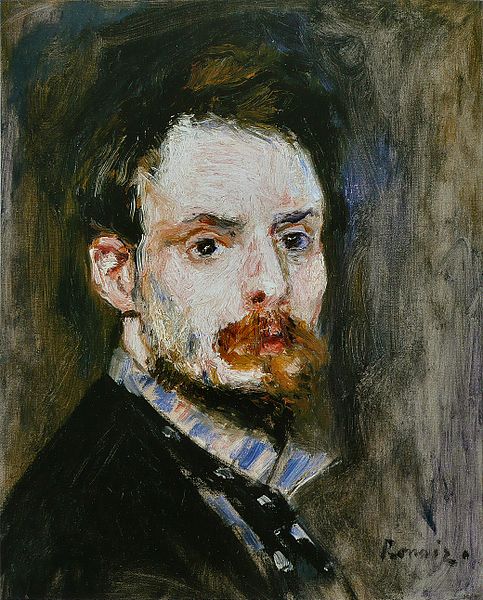
Pierre-Auguste Renoir’s self portrait (1875)
Renoir’s Early Life
Born in Limoges, France, on February 25, 1841, Renoir was the son of a tailor and a seamstress, giving him an innate talent for decorative art and a steady hand. He began his artistic career at age 13 as an apprentice to a porcelain painter in Paris.
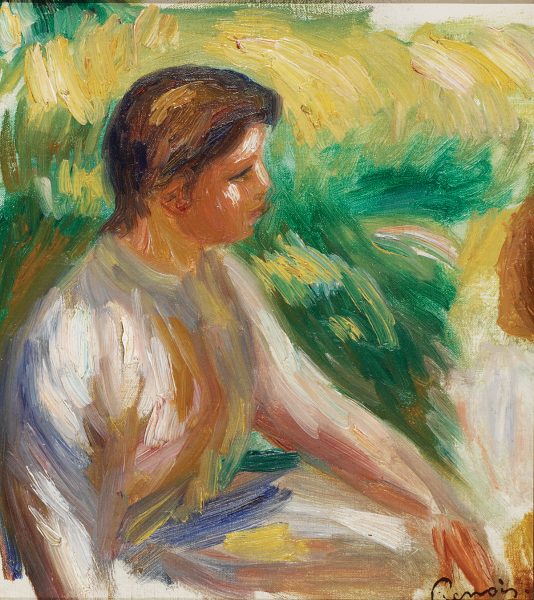
“Femme assise” (1895), Pierre-Auguste Renoir
Renoir attended the École des Beaux-Arts in 1862. Around the same time, he also became a student of Swiss artist Charles Gleyre. During this mentorship, Renoir became friends with several of his artistic contemporaries, including Frédric Bazille, Claude Monet, and Alfred Sisley.
Renoir found his first success at the annual Paris Salon exhibit in 1864, where he showed a painting inspired by Victor Hugo’s “Notre-Dame de Paris.” However, despite exhibiting another painting in the prestigious exhibition the following year, Renoir ultimately struggled to make a living as an artist.
Developing Impressionism
Many of the artists Renoir befriended during his mentorship shared a love for painting landscapes and scenes from contemporary life. But it was his camaraderie with Claude Monet that had the biggest impact on Renoir’s artistic future.
Renoir and Monet painted together in the late 1860s in the Parisian suburb of Argenteuil, a period in which they developed what would become known as the Impressionist style. There are a number of paintings in existence that show Renoir and Monet depicting the same subjects—several were on display at the recent “Monet: Framing Life” exhibition at the Detroit Institute of Arts.
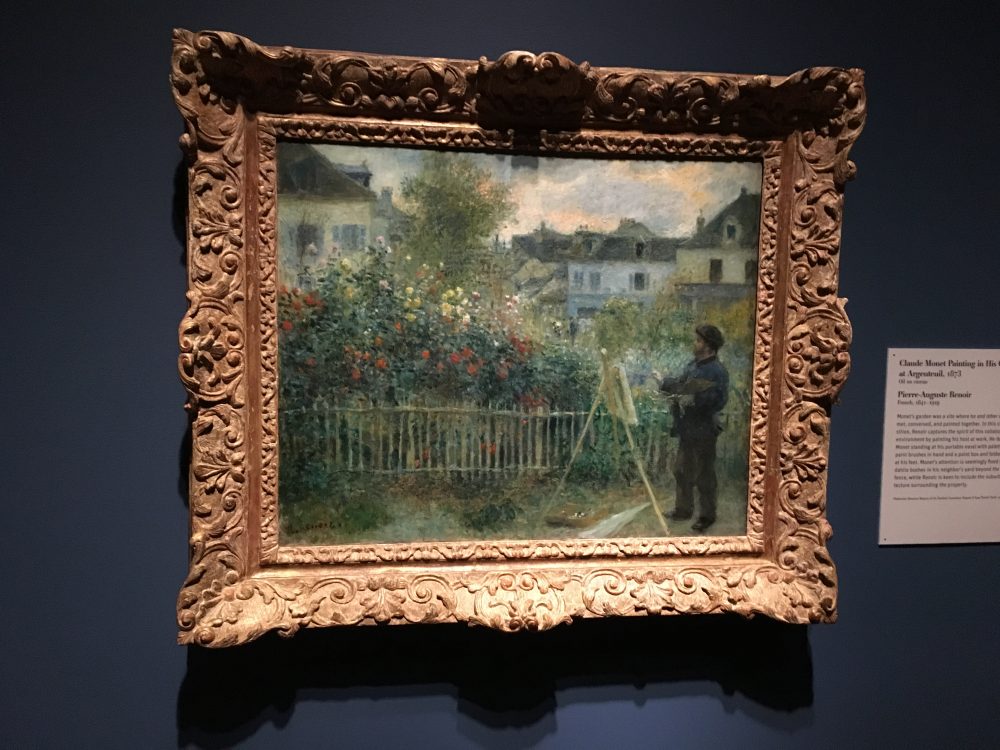
“Claude Monet Painting in His Garden at Argenteuil” (1873), by Pierre-Auguste Renoir.
Following a short stint in the French military from 1870 to 1871, Renoir teamed up with his like-minded artist friends—including Monet, Paul Cezanne, Edgar Degas, and Camille Pissarro—and showcased their artwork in the first-ever Impressionist exhibition in 1874.
Art critics did not embrace the early works of the Impressionists, with one critic going so far as to call the paintings “impressions” of paintings as opposed to real paintings. Fortunately for Renoir, patrons of the arts began gravitating toward the works of the Impressionists, and by the 1880s, his artwork was being exhibited and collected internationally.
Renoir’s Impressionist Style
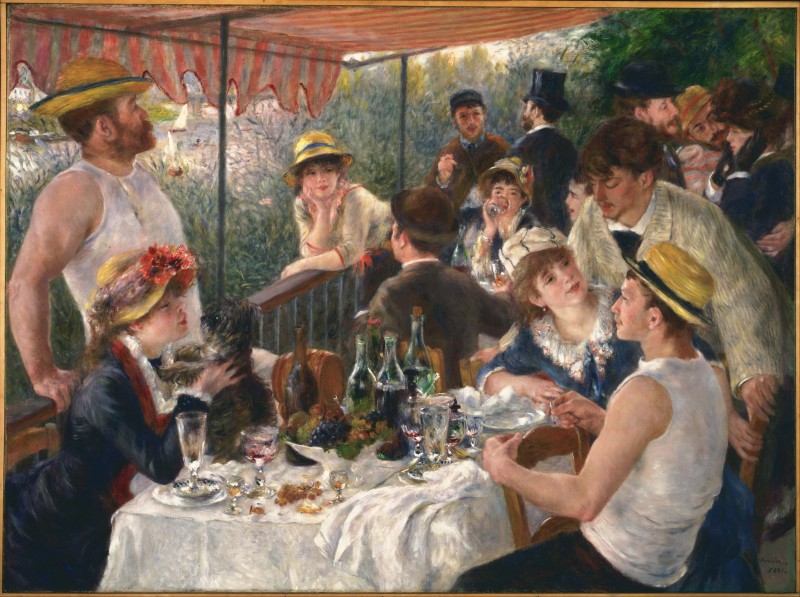
“Luncheon of the Boating Party” (1881), Pierre-Auguste Renoir. On display in the Phillips Collection in Washington, D.C.
Like many of his fellow Impressionists, Renoir celebrated beauty in his art, using bright colors, large brushstrokes, and thick impasto to capture fleeting moments from everyday life.
“Why shouldn’t art be pretty? There are enough unpleasant things in the world,” Renoir famously said.
However, the artist differed from his fellow Impressionists with his love of painting figures (especially women) as opposed to natural landscapes. Later in his career, Renoir re-introduced composition, line, and modeling into his paintings while still maintaining Impressionist color schemes.
Renoir acknowledged his shift in style when communicating with Ambroise Vollard, a renowned art dealer he began working with in 1894:
“I wanted to tell you that in about 1883 there occurred a kind of break in my work. I had got to the end of ‘Impressionism,’ and I had come to the conclusion that I didn’t either how to paint or how to draw. In short, I had come to a dead end.”
An Artist to the End
Renoir married his longtime girlfriend, Aline Charigot, in 1890. Along with their son, Pierre—who was born in 1885—they expanded their family with two more sons. His family, along with wealthy clients, would become the subjects of his many portraits.
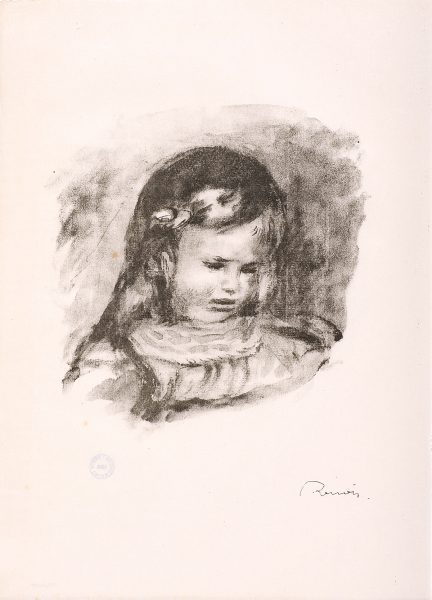
“Claude Renoir, la Tete Baissee” (1919), D. 39. Pierre-Auguste Renoir
In the 1890s, the joints on Renoir’s fingers and hands swelled with rheumatoid arthritis. His condition only escalated after falling off his bike in 1897 and breaking his arm, and in 1912 following a stroke that left him bound to a wheelchair. None of this deterred him or his cheery disposition, however, and he painted through the pain.
“The pain passes, but the beauty remains,” Renoir said.
One enduring myth is that Renoir needed his brushes tied to his hands to paint, but, in reality, Renoir found new ways of holding his brushes himself. What some presumed to be strips of cloth tying the brush in Renoir’s his hand were actually bandages to prevent his curled fingers from digging into his palms.
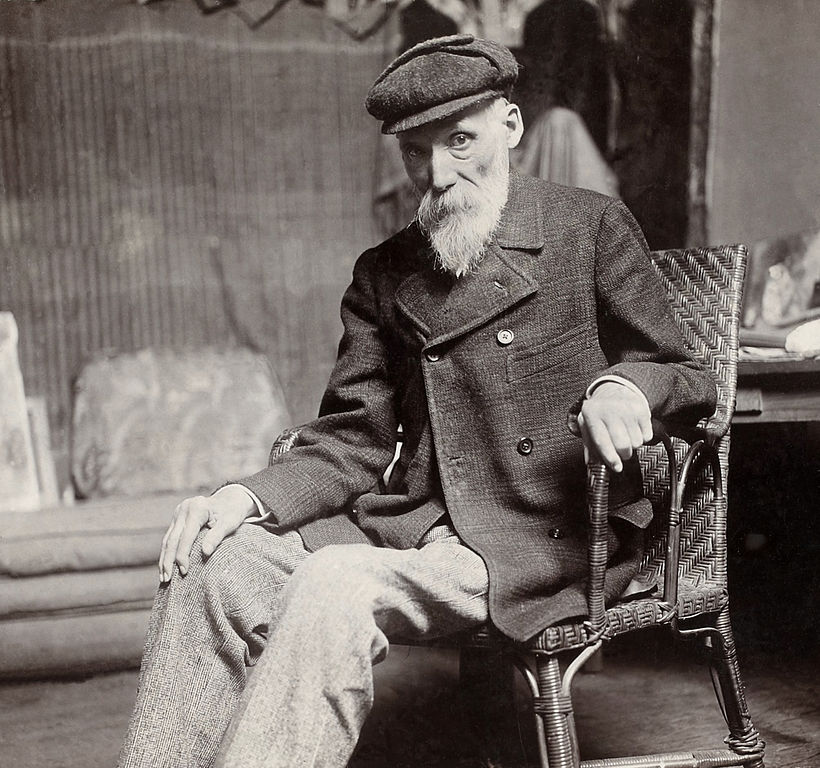
Pierre-Auguste Renoir in his older years. (By Dornac. Public domain)
When Renoir’s arms developed mobility issues, his large canvases were attached to a device that rolled them, allowing the artist to work on small sections at a time. Meanwhile, paint palettes were attached to his wheelchairs so he could easily access his desired hues.
Even after his late-in-life-health problems emerged, Renoir went on to create another 400 works of art. In fact, Renoir was actively painting until the end. It is said that Renoir’s last words, spoken at the age of 78, were in reference to painting: “I think I’m beginning to learn something about it.”
Renoir’s Enduring Legacy
The painter lived long enough to see a selection of his works acquired by the Louvre in 1919. He died on December 3, 1919, in his home in Cagnes-sur-Mer, France.
Renoir created several thousand paintings during his career. In addition to his paintings, Renoir worked with Vollard to create color lithographs.
Artwork by Renoir is permanently on display in museums and institutions around the world, including the National Gallery of Art, the Musée d’Orsay, Philadelphia’s Barnes Foundation, and the Louvre.
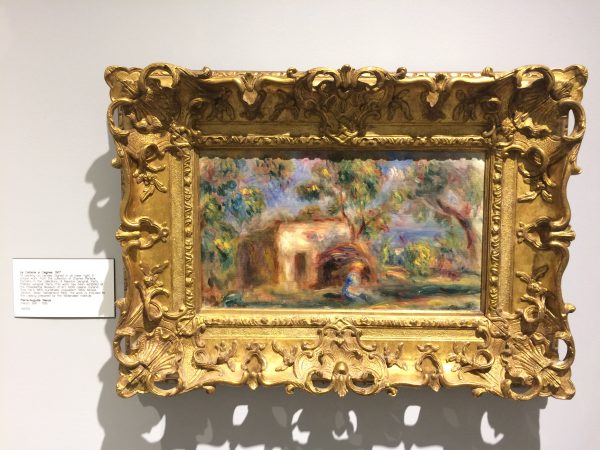
“La Cabane a Cagnes” (1917), Pierre-Auguste Renoir. On display at the Park West Museum
Park West Museum is among those institutions, with gallery space dedicated to Renoir’s paintings as well as drawings. Park West Museum is open Monday through Saturday from 10 a.m. to 6 p.m. EST and Sunday from 11 a.m. to 5 p.m. EST. The gallery and museum are located at 29469 Northwestern Highway, Southfield, Michigan 48034.
Collectors interested in acquiring artwork by Renoir can contact our gallery consultants at (800) 521-9654 ext. 4 during business hours or sales@parkwestgallery.com after hours.
LEARN MORE ABOUT THE RENOIR LEGACY:





